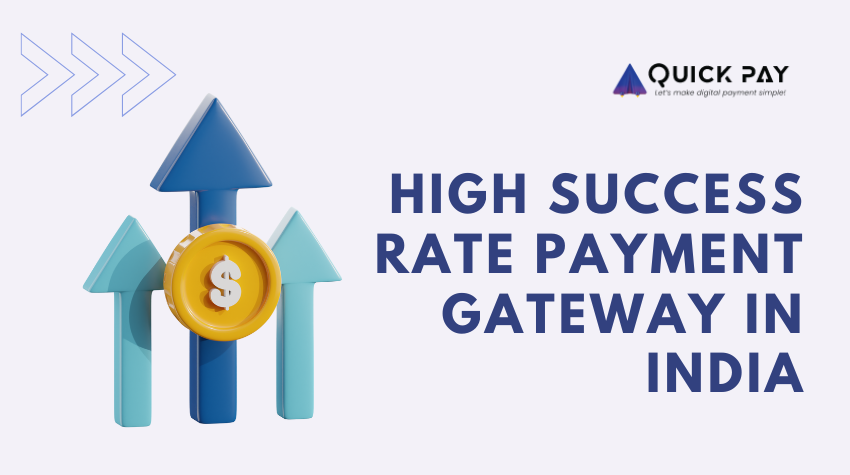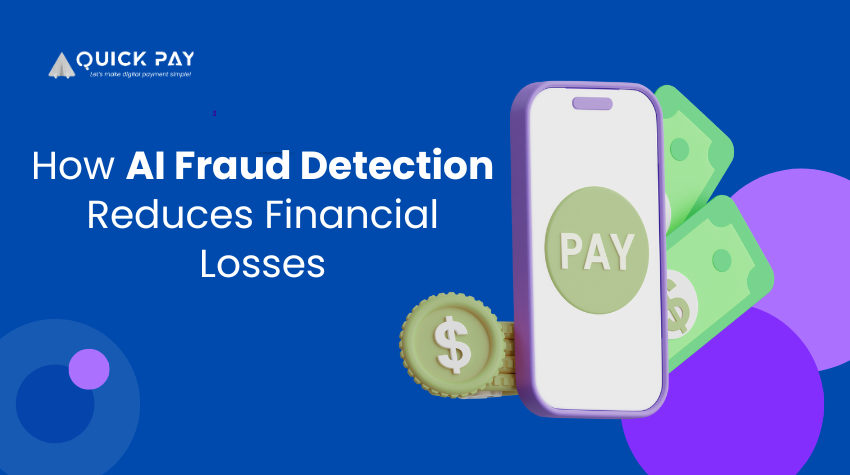A Strategic Analysis of Payment Gateway Success Rates for 2025
In the hyper-competitive Indian digital commerce landscape of 2025, the selection of a payment gateway has transcended operational necessity to become a primary strategic decision. The market, projected to surpass USD 4 billion by 2032, is no longer defined by marginal differences in transaction fees but by a gateway's fundamental ability to maximize the Payment Success Rate (PSR).
The Indian payments ecosystem is dominated by the Unified Payments Interface (UPI), which accounts for over 80% of retail transaction volumes and boasts success rates nearing 99%. In contrast, card-based transactions exhibit lower and more variable success rates, typically between 90-95%. This bifurcation demands a dual-pronged gateway strategy: unwavering reliability for high-volume UPI traffic and sophisticated optimization for the more fragile card payment channel. The analysis reveals that even a 1-2% improvement in overall PSR can yield a disproportionately high impact on a company's top and bottom lines by not only capturing otherwise lost sales but also by preventing customer churn and reducing wasted customer acquisition costs.
The "cost" of a payment gateway is not its transaction discount rate (TDR) but the total revenue lost due to its performance failures. The strategic recommendation is clear: prioritize a gateway's technological prowess, demonstrated success in maximizing first-attempt transaction success, and its ability to provide a seamless, mobile-first checkout experience over marginal differences in pricing. Making a data-driven decision, potentially through A/B testing, is paramount to unlocking sustainable growth and building a resilient digital business in India.
he Strategic Imperative of Payment Success Rate
In the architecture of digital commerce, the payment gateway serves as the final, critical link between customer intent and realized revenue. For years, businesses have viewed this link primarily through the lens of cost, focusing on minimizing transaction fees. However, this perspective is dangerously outdated. The modern digital enterprise must recognize the Payment Success Rate (PSR) not as a passive technical metric, but as an active and powerful business Key Performance Indicator (KPI) that directly shapes financial performance, customer relationships, and long-term brand viability.
Defining Payment Success Rate (PSR): Beyond the Simple Formula
At its most basic level, the Payment Success Rate (also referred to as Transaction Success Rate) measures the percentage of successful payment transactions out of the total number of transactions attempted. The calculation is straightforward
PSR(%)=Total Number of Attempted Transactions / Number of Successful Transactions?x100
if a merchant processes 500 transaction attempts in a day and 480 are completed successfully, the PSR is 96%. While simple, this formula masks critical nuances. Some payment providers may define "success" differently, for example, by treating a payment that initially fails but is successful upon a customer's retry as a single successful attempt. This can artificially inflate reported rates and obscure underlying issues. A true analysis requires a more granular view that distinguishes between first-attempt success and retried success, as the friction introduced by a retry can still lead to customer frustration and cart abandonment.
More than just a number, PSR serves as a vital health indicator for the entire e-commerce operation. It is the ultimate measure of a business's ability to convert customer interest into a sale at the most crucial moment. A low PSR is a clear signal of friction in the payment process, representing a leak in the revenue funnel that can stem from issues with the gateway, the checkout process, or the underlying banking infrastructure.
How PSR Directly Impacts Business Viability
A high PSR creates a virtuous cycle of positive business outcomes, while a low rate triggers a cascade of negative consequences that extend far beyond the immediate lost sale. The impact is felt across every core function of a digital business.
- Revenue Generation: The link between PSR and revenue is direct and absolute. Every successful transaction contributes to the top line, whereas every failure represents a potential loss of sale. In high-volume sectors like D2C and EdTech, even a seemingly minor 2% improvement in success rates can translate into lakhs of rupees in additional monthly revenue. A consistently high PSR ensures that the maximum possible value is extracted from the existing customer traffic, making it a powerful lever for organic growth.
- Customer Satisfaction and Trust: A smooth, successful transaction is the bedrock of a positive customer experience. A recent survey revealed that an overwhelming 74% of customers identify the "successful completion" of a transaction as the single most important factor influencing their overall payment experience. When payments are processed efficiently and without error, it builds customer confidence and trust in the business. Conversely, a failed payment is a moment of intense frustration that can single-handedly sour the entire shopping journey.
- Customer Retention and Lifetime Value (LTV): The consequences of a poor payment experience are not fleeting. Research indicates that as many as 62% of customers will not return to a website after experiencing a payment failure. This transforms a one-time transaction failure into a long-term revenue problem. Each lost customer represents a loss of their entire future purchasing potential, or Lifetime Value (LTV). A high PSR, by providing a reliable and satisfactory experience, is therefore a powerful driver of customer loyalty and repeat business, directly increasing LTV. The cost of acquiring a new customer is widely cited as being at least five times higher than retaining an existing one, making the retention impact of PSR a critical factor in long-term profitability.
- Brand Reputation: In the digital age, reputation is built on reliability. A business that consistently provides a seamless payment experience earns a reputation for efficiency and trustworthiness. This becomes a key brand differentiator, attracting new customers who seek dependable transaction processes. On the other hand, a business perceived as having a "broken payment system" suffers significant brand damage, as frustrated customers share their negative experiences online. The reliability of the payment gateway becomes, in the customer's mind, a direct reflection of the brand's own competence.
- Operational Efficiency and Cost Reduction: The impact of a low PSR extends to the back office, creating significant operational burdens. Each failed transaction can trigger a customer support ticket, consuming valuable time and resources. It complicates financial reconciliation and inventory management. Furthermore, businesses must often spend additional marketing funds to retarget and re-engage customers who abandoned their carts due to payment issues-an expensive effort to win back an already annoyed customer. A high PSR minimizes these downstream costs, freeing up operational teams to focus on value-adding activities rather than damage control.
The true cost of a failed payment is therefore not merely the value of the abandoned cart. It is a compounding loss that includes the customer's entire future lifetime value and the sunk marketing cost used to acquire that customer in the first place. This reframes the role of a payment gateway: it is not just a payment processor but a direct modulator of marketing ROI. A gateway with a 2% higher success rate makes the entire marketing budget more efficient by successfully converting a higher percentage of the traffic that has already been acquired.
Deconstructing Transaction Failures: An Analytical Framework
To effectively improve the Payment Success Rate, a business must first understand the anatomy of a failure. A generic "transaction failed" message provides no actionable intelligence. A systematic approach is required to diagnose the root cause, distinguishing between temporary glitches and permanent issues, and between problems originating with the customer, the merchant's systems, or the broader banking network.
A payment transaction is a complex dance involving multiple parties. A failure can occur at any point in this chain. Understanding where the breakdown happened is the first step toward a solution.
- Customer-Related Issues: These are the most common source of failures and often stem from simple human error or financial circumstances. They include insufficient funds in a bank account or an exceeded credit card limit, which is a leading cause of declines. Other frequent issues are incorrect payment information, such as typos in the card number, CVV code, or expiration date; the use of an expired card; or a mismatch between the billing address provided and the one on file with the issuing bank. Banks may also impose daily or weekly spending limits that a customer might unknowingly exceed.
- Business/Merchant-Related Issues: Failures can also originate from the merchant's own technical setup. An incorrectly configured payment gateway, with errors in API keys or credentials, can prevent any transaction from being processed. Outdated software or APIs on the business's website can lead to compatibility issues and failures. Furthermore, a merchant's own fraud prevention settings can sometimes be too stringent, inadvertently blocking legitimate transactions that appear suspicious.
- Processor/Bank-Related Issues: The infrastructure of the payment gateway, payment processor, and the customer's issuing bank is another critical point of failure. Poor network connectivity can cause transaction timeouts, leaving the customer in limbo. System-wide outages at the payment processor or the bank, though rare, can bring transactions to a halt. During peak shopping periods like festival sales, the processing systems can become overloaded, leading to delays and failures if they lack sufficient capacity. Finally, the issuing bank's own fraud detection algorithms may flag and decline a legitimate transaction if it deviates from the customer's typical spending pattern, such as a large purchase or a transaction from a new location.
A significant portion of these "payment failures" are, in essence, data and communication problems rather than insurmountable technical errors. An expired card or a mistyped CVV is a data issue. This reality suggests that the path to a higher PSR lies not only in robust back-end technology but also in intelligent front-end User Experience (UX) design. A well-designed checkout form with clear labels, real-time validation, and helpful error messages can prevent many user-induced errors before the transaction is ever submitted to the gateway. Proactive communication, such as automated reminders for expiring cards, can also preemptively solve a common cause of failure. Therefore, a business's responsibility for its PSR extends to the optimization of its own digital storefront.
Hard Declines vs. Soft Declines: Understanding the Difference
Not all declines are created equal. Payment networks categorize failures into two main types, and understanding the distinction is crucial for developing an intelligent response strategy.
- Hard Declines: These are permanent and definitive rejections from the issuing bank. The reason for a hard decline is typically unresolvable, such as an invalid card number, a card that has been reported lost or stolen, or a closed bank account. Attempting to retry a transaction that has received a hard decline is futile and can even trigger fraud alerts. The only resolution is for the customer to provide a different payment method.
- Soft Declines: These are temporary failures that may be successful if the transaction is attempted again. The reasons for soft declines are varied and can include temporary technical issues at the bank, suspected fraud that requires a second look, or even insufficient funds if the customer quickly transfers money into their account.
This distinction between hard and soft declines is the primary justification for investing in a "smart" payment gateway over a basic one. A simple gateway treats all failures as final, leaving the burden on the customer to retry. An intelligent gateway, however, can interpret the type of decline. It recognizes a soft decline as an opportunity for revenue recovery and can be configured to automatically and intelligently retry the transaction through the same or an alternate channel without requiring any action from the customer. This capability directly salvages sales that would otherwise be lost, providing a clear and measurable return on investment.
Leveraging Decline Codes for Actionable Insights
When an issuing bank declines a transaction, it doesn't just send back a generic "failed" message. It typically provides a specific decline code-a two-digit or alphanumeric error code that explains the reason for the failure. For a business, these codes are a treasure trove of actionable data.
Common examples include codes like '51' for insufficient funds, '54' for an expired card, or '05' for a generic "Do Not Honor" message, which could indicate a fraud concern from the bank.
The strategic value of these codes lies in pattern analysis. By regularly monitoring and analyzing the distribution of decline codes, a business can move from reacting to individual failures to proactively addressing systemic issues. For example:
- A high volume of "Insufficient Funds" (Code 51) declines might suggest an opportunity to promote "Buy Now, Pay Later" (BNPL) options more prominently.
- A spike in "Expired Card" (Code 54) failures, especially for subscription businesses, points to the need for an automated card updater service or proactive customer notifications.
- An increase in fraud-related declines could mean that the merchant's own fraud prevention rules are too aggressive and are generating false positives, requiring a review of those settings.
Analyzing decline codes transforms the payment system from a black box into an early warning system, providing the data needed to continually refine the checkout experience, reduce friction, and ultimately boost the transaction success rate.
Success Rate Benchmarks in India (2025)
An effective evaluation of a payment gateway requires a clear understanding of achievable performance benchmarks in the Indian context.
- The UPI vs. Cards Divide: The data is unequivocal: UPI is the gold standard for performance. Transactions processed via UPI consistently demonstrate success rates of approximately 99%. This high degree of reliability has set customer expectations. In contrast, credit and debit card transactions are inherently more complex and exhibit lower average success rates, typically falling within the 90-95% range. This variability is influenced by factors such as the performance of the specific issuing bank and the friction introduced by 3D Secure authentication protocols.
- Bank-Level Performance Variance: Even within the highly reliable UPI network, not all participants perform equally. Publicly available data from the National Payments Corporation of India (NPCI) reveals performance variations among different remitter and beneficiary banks. For instance, the monthly performance data shows that some banks have significantly higher technical decline (TD) or business decline (BD) percentages than others. This data underscores a critical point: a gateway's ability to achieve a 99%+ UPI success rate depends on its intelligence in monitoring this bank-level performance in real-time and routing transactions away from any bank that is momentarily underperforming. This capability to abstract away the complexity of the banking network is a hallmark of a top-tier gateway.
- Revising the "Good" PSR Benchmark: While industry reports often cite a 98% PSR as a "good" benchmark, this figure is an oversimplification in the context of the Indian market. Given the dominance of UPI, a blended rate of 98% might actually conceal poor performance on card transactions. Businesses should demand more granular reporting from their providers and set more ambitious targets: a PSR of
- 99%+ for UPI traffic and 95%+ for card traffic.
Payment Failures and Cart Abandonment in India
Cart abandonment is one of the most persistent challenges in e-commerce. Globally, the average cart abandonment rate hovers around a staggering 70%, meaning seven out of every ten potential sales are lost before completion. The situation in India is comparable, with abandonment rates estimated to be between 60% and 70%.
A significant driver of this phenomenon is friction within the checkout and payment process. Studies show that:
- 25% of shoppers abandon a purchase because they don't trust the website with their credit card information or because their preferred payment method is unavailable.
- 22% abandon their cart because the checkout process is too long or complicated.
- Most critically, between 33% and 62% of customers will abandon the checkout process immediately following a failed payment.
This creates a direct, quantifiable link between Payment Success Rate and cart abandonment. Improving PSR is one of the most effective levers a business can pull to reduce its abandonment rate. For instance, Indian businesses that have effectively integrated UPI payments have reported a corresponding 20% drop in cart abandonment.
The problem is particularly acute on mobile devices. Data shows that the cart abandonment rate on mobile is significantly higher (85.65%) than on desktop (73.07%). This is because the friction points-difficult data entry, network instability, switching between apps for OTPs-are magnified on a smaller screen. This reality makes mobile-first optimization features, such as Native OTP, Auto OTP Read, and CVV-less payments, absolutely critical. They are no longer "nice-to-have" features but are the most important tools for improving PSR and conversion for the majority of Indian e-commerce traffic.
Calculating the ROI of a Superior Payment Gateway
To make a compelling business case for choosing a gateway that may have a slightly higher fee but offers a superior success rate, it is essential to frame the decision in terms of Return on Investment (ROI). The standard ROI formula is:
ROI(%)=Net Profit?/Cost of Investmentx100
In this context, the variables must be defined from a business impact perspective:
- Cost of Investment: This is not the total fee paid to the gateway. It is the marginal increase in cost compared to a cheaper, lower-performing alternative. For example, if Gateway A charges 1.9% and Gateway B charges 2.0%, the "cost" for this analysis is the 0.1% difference in TDR.
- Net Profit (The "Return"): This is the crucial component where the true value is calculated. The return is a composite of several financial gains and cost savings that directly result from the higher PSR:
- Incremental Revenue Gained: This is the direct increase in top-line revenue from successful transactions that would have otherwise failed. This can be precisely calculated using the model presented in Table 1 (Section 1), based on the measured uplift in PSR from an A/B test.
- Reduced Operational Costs: This includes "soft" savings from a lower volume of payment-related customer support inquiries and reduced manual effort in financial reconciliation.
- Improved Marketing Efficiency: This captures the value of the "wasted CAC" that is now recovered because fewer newly acquired customers are lost due to payment failure. This value can be calculated as (Number of Recovered Customers) \times (Average CAC).
This analytical approach fundamentally reframes the decision-making process. It moves the conversation away from a simple comparison of fee percentages and toward a comprehensive business impact analysis. A gateway that costs 0.1% more in fees but delivers a 2% higher PSR is not "more expensive"-it is profoundly more profitable. This ROI model provides a powerful, data-backed tool to justify investing in a high-performance payment gateway as a key driver of revenue growth, not as a simple cost center.
















